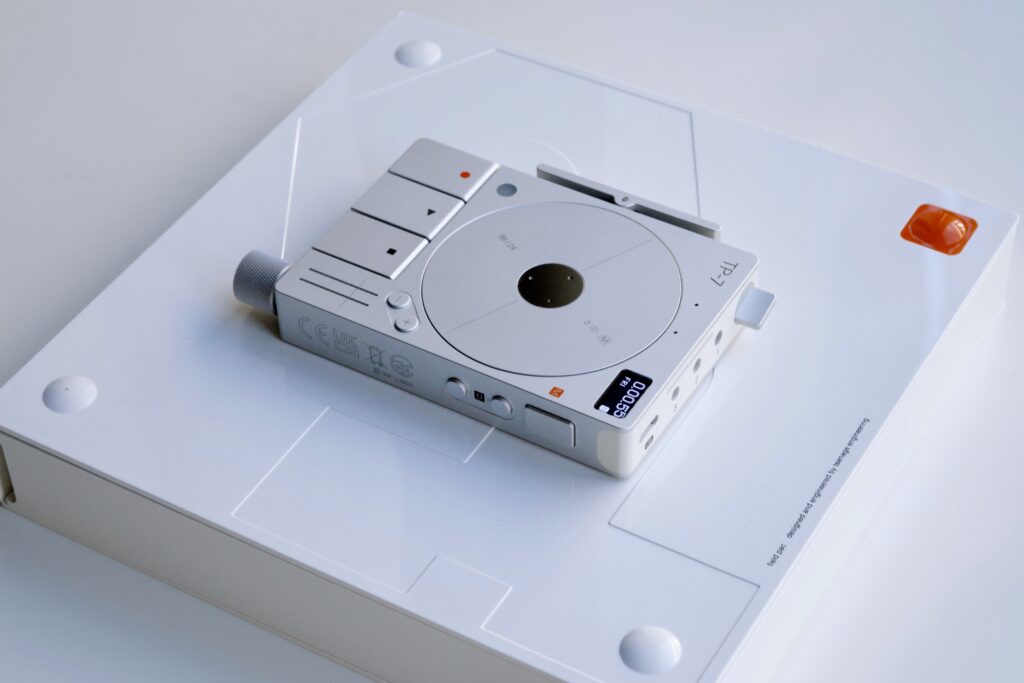Imagine a world where your kitchen appliances can anticipate your every need, from preheating the oven at the perfect time to ordering your groceries before you even realize you’re running low. While this may sound like something out of a science fiction novel, smart kitchen technology is becoming increasingly prevalent in households around the globe. However, with this convenience comes the question of privacy and security. As our kitchens become more connected and integrated with smart devices, it’s essential to examine the potential risks and ensure that our personal information remains protected.

Data Collection and Privacy Concerns
Smart kitchen technology, like any other smart device, collects various types of data to provide a personalized experience. This includes information such as your location, usage patterns, and preferences. While data collection is essential for these devices to function effectively, it also raises concerns about privacy and data security.
Types of Data Collected
Smart kitchen devices collect a wide range of data, including your cooking habits, recipes, shopping lists, and even the contents of your pantry. They may also gather personal information, such as your name, email address, and contact details. Additionally, voice-enabled devices collect audio recordings of your interactions, which are often stored in the cloud.
Potential Privacy Issues
The extensive amount of data collected by smart kitchen technology poses potential privacy risks. For instance, the collection of dining preferences and grocery lists may result in personalized advertisements or even suggestions to third-party retailers. There is also the possibility of unauthorized access to your personal data, leading to misuse or identity theft.
Data Sharing and Sale
One of the major concerns with smart kitchen devices is the sharing or sale of data to various third-party companies. While this data is typically used for targeted advertising and product enhancement, it does raise questions about how securely this information is handled and the extent to which your data is being shared without your knowledge or consent.
Mitigating Privacy Risks
To address privacy concerns, it is crucial to choose smart kitchen devices from reputable manufacturers who prioritize data privacy and security. Additionally, understanding and reviewing privacy settings, opting for selective data sharing, and regularly updating device firmware can help mitigate potential risks. Furthermore, being mindful of the information you provide through these devices and staying informed about evolving privacy practices are important steps in protecting your data.
Cybersecurity Risks and Vulnerabilities
While data privacy is a major concern, smart kitchen technology is also subject to cybersecurity risks and vulnerabilities. With the increasing interconnectedness of devices and networks, it is essential to be aware of the potential threats that these devices may face.
Smart Device Vulnerabilities
Smart kitchen devices, like any other Internet of Things (IoT) device, can be vulnerable to hacking and exploitation. Weak passwords, unpatched software vulnerabilities, and lack of encryption can leave these devices susceptible to unauthorized access, potentially compromising your personal information and even posing physical risks if the device controls kitchen appliances.
Wi-Fi Network Attacks
Another significant cybersecurity concern is the potential for attackers to compromise your home Wi-Fi network. If your network security is weak or improperly configured, hackers may gain access to your smart kitchen devices through the network, allowing them to intercept data or control the devices remotely.
Unauthorized Access and Hacking
Smart kitchen devices that are not adequately secured can be targeted by hackers. Unauthorized access to these devices can lead to privacy breaches, such as eavesdropping on conversations or even video surveillance. In some cases, hackers may leverage these vulnerabilities to gain control of other connected devices in your home network.
Protecting Against Cyber Threats
To protect your smart kitchen technology from cybersecurity risks, it is crucial to take several precautions. Start by securing your home network with a strong password and encryption. Regularly update the firmware and software of your devices to ensure they have the latest security patches. Additionally, consider using a separate network for your smart devices to isolate potential vulnerabilities. Lastly, be cautious when connecting your devices to public Wi-Fi networks, as these can be more susceptible to attacks.
Smart Assistants and Voice Recognition Technology
Voice recognition technology and smart assistants, such as Amazon Alexa or Google Assistant, have become increasingly prevalent in the kitchen. While these devices offer convenience and hands-free control of your kitchen appliances, they also raise privacy concerns due to the nature of voice data collection and storage.
Voice Data Collection and Storage
Smart assistants collect voice data whenever they are activated or respond to voice commands. This data is usually stored in the manufacturer’s servers or the cloud. By analyzing this data, manufacturers can improve the accuracy and effectiveness of voice recognition technology.
Privacy Concerns with Voice Assistants
The constant listening and recording of voice data by smart assistants can raise concerns about privacy. While manufacturers claim that voice data is only stored for a limited period and used solely to enhance the device’s functionality, there is always a potential risk of this data being accessed or misused by unauthorized individuals or entities.
Protecting Voice Assistant Data
To address privacy concerns with voice assistants, it is essential to familiarize yourself with the manufacturer’s privacy policies. Opting out of voice data collection or regularly deleting stored voice recordings can provide an added layer of privacy. Additionally, ensure that the device’s microphone is physically turned off when not in use to prevent accidental voice recording.
Surveillance and Recording
Smart cameras and audio recording capabilities in the kitchen can provide added convenience but can also raise concerns about surveillance and potential misuse of technology.
Smart Cameras and Audio Recording
Some smart kitchen devices, such as smart refrigerators or security cameras, offer built-in cameras and audio recording capabilities. These features can be used to monitor your kitchen activities and enable features like remote viewing or video conferencing.
Potential Misuse of Surveillance Technology
The use of smart cameras and audio recording in kitchens raises concerns about potential misuse. Unauthorized access to these devices may result in the invasion of your privacy or even surveillance without your knowledge. Additionally, the storage and potential mishandling of recorded video or audio data can pose a risk to your privacy.
Securing Smart Camera Feeds
To ensure the security of smart camera feeds and mitigate privacy risks, it is important to follow best practices. Change default passwords to unique and strong ones, regularly update the firmware of your devices, and set up encryption for video streams. Moreover, consider placing physical covers on cameras when not in use to prevent unwanted surveillance.

Third-Party Integration and Data Access
Smart kitchen devices often integrate with other smart devices, creating a connected ecosystem. While this integration offers convenience, it also introduces potential privacy and security risks.
Integration with Other Smart Devices
Smart kitchen devices may integrate with other devices, such as smart home hubs, speakers, or even fitness trackers, to enhance their functionality and enable seamless control. However, this integration may result in the sharing and exchange of data between different manufacturers and platforms.
Risks with Third-Party Apps and Services
Third-party apps and services that are integrated with smart kitchen devices may have access to your personal data. By granting permissions to these apps, you are essentially allowing them access to your device’s data, potentially compromising your privacy and increasing the risk of data breaches.
Protecting Against Unauthorized Data Access
To protect against unauthorized data access and mitigate privacy risks, it is advisable to carefully review app permissions and only grant access to trusted and reputable apps. Regularly review and revoke app permissions that are no longer necessary. Additionally, consider using separate user accounts or profiles for different users to restrict access to personal information.
Data Storage and Cloud Security
Smart kitchen devices often rely on cloud storage to store data, raising concerns about the security and privacy of this information.
Cloud Storage of Kitchen Data
Smart kitchen devices, such as smart refrigerators or cooking assistants, often upload and store data in the cloud. This includes personal information, recipes, and usage patterns, which are then accessible from various devices.
Encryption and Data Security
To ensure the security of cloud-stored data, it is essential for manufacturers to implement robust encryption protocols. By encrypting the data both in transit and at rest, the risk of unauthorized access is significantly reduced. Additionally, regular security audits and vulnerability assessments should be conducted to identify and address potential weaknesses in the cloud infrastructure.
Choosing Secure Cloud Services
When selecting smart kitchen devices that rely on cloud storage, it is crucial to choose manufacturers that prioritize data security and partner with reputable cloud service providers. Researching the data security practices of manufacturers and ensuring they comply with industry standards can help mitigate potential security risks associated with cloud storage.

Manufacturer and Vendor Responsibility
Manufacturers and vendors play a crucial role in ensuring the privacy and security of smart kitchen technology.
Privacy Policies and Transparency
Manufacturers should provide clear and transparent privacy policies that outline what data is collected, how it is used, and how long it is retained. These policies should also explain the security measures in place to protect the data. Transparent communication helps users make informed decisions about the privacy implications of using these devices.
Security Features and Updates
Manufacturers should prioritize security by implementing robust security features and regularly releasing firmware updates to address vulnerabilities. These updates should be easily accessible to users and provide protection against emerging cybersecurity threats.
Vendor Trustworthiness and Reputation
Choosing devices from reputable manufacturers and vendors with a good track record in data privacy and security is essential. Researching customer reviews, checking for any previous security incidents, and considering the manufacturer’s commitment to addressing vulnerabilities can help ensure you are making a well-informed choice.
User Awareness and Education
User awareness and education are crucial to ensure individuals understand the privacy and security risks associated with smart kitchen technology.
Understanding Privacy Settings
Users should familiarize themselves with the privacy settings and options available on their smart kitchen devices. By reviewing and customizing these settings according to their preferences, users can better protect their privacy and control the data shared by these devices.
Regular Device Updates and Patches
Keeping smart kitchen devices updated with the latest firmware patches is essential to address security vulnerabilities. Users should regularly check for updates and apply them promptly to ensure their devices are protected against emerging cyber threats.
Educating Users about Risks
Manufacturers and vendors have a responsibility to educate users about the privacy and security risks associated with smart kitchen technology. This can be done through user manuals, online resources, or even proactive communication that highlights best practices, data protection measures, and potential risks.

Regulatory Framework and Legal Considerations
The rapid advancement of smart kitchen technology has outpaced legislation and regulatory frameworks. However, as these devices increasingly become a part of our daily lives, there is a growing need for improved legislation and enforcement to protect users’ privacy and security.
Existing Privacy and Security Regulations
Different countries and regions have varying regulations addressing data privacy and cybersecurity. However, these regulations may not specifically address the unique challenges posed by smart kitchen technology. Nonetheless, existing frameworks provide a foundation for manufacturers and users alike to comply with certain privacy and security standards.
Need for Improved Legislation
As the adoption of smart kitchen devices continues to grow, there is a pressing need for improved legislation that specifically addresses the privacy and security concerns associated with these devices. This includes regulations that govern data collection, use, and storage, as well as requirements for manufacturers to implement robust security measures.
Enforcement and Accountability
Ensuring effective enforcement of privacy and security regulations is essential for user protection. This includes mechanisms for reporting and addressing privacy breaches, as well as holding manufacturers accountable for negligence or non-compliance with privacy and security standards.
Balancing Convenience and Privacy
The adoption of smart kitchen technology requires individuals to strike a balance between convenience and privacy.
Trade-Offs between Features and Privacy
Smart kitchen devices offer a variety of convenient features that can simplify cooking, grocery shopping, and meal planning. However, these features often rely on extensive data collection, which poses privacy risks. Users must assess the trade-offs between the convenience offered by these devices and the level of privacy they are comfortable relinquishing.
Personal Risk Assessment
Each individual’s perception of privacy and security may vary. Conducting a personal risk assessment can help determine the level of privacy one is willing to compromise for the benefits offered by smart kitchen technology. This assessment involves weighing the potential privacy risks against the desired features and evaluating the measures in place to protect user data.
Determining an Acceptable Level of Privacy
Ultimately, it is up to each individual to determine their own acceptable level of privacy when using smart kitchen technology. By staying informed about privacy practices, reviewing settings, and making informed choices about the devices and services used, individuals can strike a balance that aligns with their personal privacy preferences.











